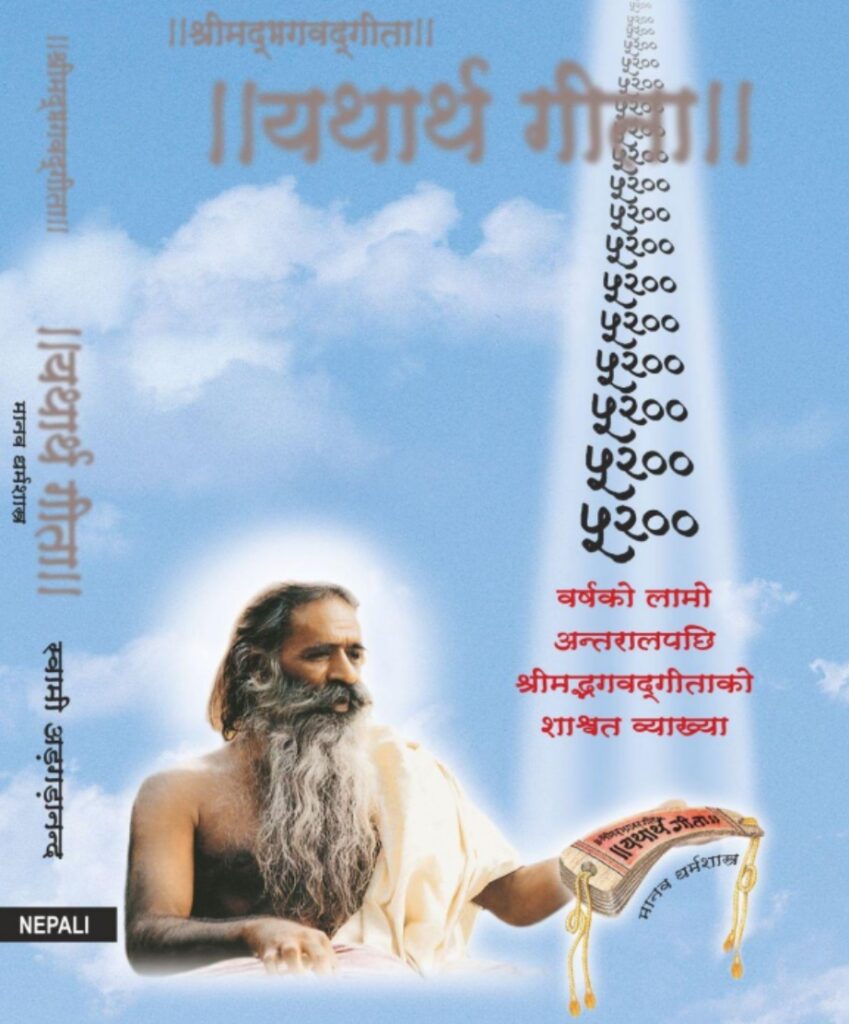
Ramayan in Nepali by Bhanybhakta Acharya
Auther
Aadikavi Bhanubhakta Acharya

Ramayan in Nepali
Ramayan In Nepali
Exploring the Cultural and Spiritual Heritage
Ramayan, an ancient epic of profound significance in Hinduism, has transcended geographical boundaries and linguistic barriers, resonating deeply with people across various cultures and regions. In the context of Nepal, Ramayan holds a special place as it has been translated, adapted, and cherished in Nepali culture for centuries. This essay delves into the rich tapestry of Ramayan in Nepali, exploring its cultural, spiritual, and literary dimensions while elucidating its enduring influence on Nepali society.
Historical Background:
The roots of Ramayan in Nepali can be traced back to ancient times when the epic was orally transmitted through generations, captivating audiences with its timeless narrative and moral teachings. As Nepal shares a profound cultural affinity with India, the Ramayan found its way into the hearts and minds of Nepali people, becoming an integral part of their cultural heritage.
Literary Tradition:
The translation of Ramayan into Nepali language further cemented its place in the literary tradition of the region. Renowned scholars and poets undertook the monumental task of translating the epic, ensuring its accessibility to a wider audience. These translations not only preserved the essence of the original Sanskrit text but also infused it with the linguistic and cultural nuances of Nepal, creating a unique rendition of Ramayan in Nepali.
Cultural Significance:
Ramayan in Nepali transcends its literary dimensions to become a cultural phenomenon deeply ingrained in the fabric of Nepali society. Festivals such as Dashain and Tihar provide occasions for the recitation of Ramayan verses and enactment of its episodes through traditional dramas and performances. These cultural practices not only entertain but also serve to instill moral values and spiritual teachings among the populace, fostering a sense of unity and reverence for the epic.
Spiritual Depth:
At its core, Ramayan in Nepali is a spiritual journey that resonates with the deepest aspirations of the human soul. The divine qualities exemplified by Lord Rama, such as righteousness, devotion, and compassion, serve as guiding principles for individuals seeking spiritual enlightenment. Through the trials and tribulations faced by the characters in the epic, one discovers profound truths about the nature of existence and the eternal struggle between good and evil.
Local Adaptations:
Over the centuries, Ramayan in Nepali has undergone numerous adaptations and interpretations, reflecting the diverse cultural landscape of Nepal. Local customs, rituals, and beliefs have been seamlessly interwoven into the narrative, enriching its tapestry with regional flavors and perspectives. Whether through folk songs, traditional dances, or community gatherings, the Ramayan continues to evolve, adapting to the changing times while retaining its timeless relevance.
Impact on Society:
The influence of Ramayan in Nepali extends far beyond its literary and cultural realms, shaping the collective consciousness of Nepali society. Its teachings permeate every aspect of life, from family dynamics to social interactions, providing a moral compass for individuals to navigate the complexities of existence. Moreover, the epic serves as a unifying force, transcending caste, creed, and ethnicity to foster a sense of belonging and shared identity among the Nepali people.
Contemporary Relevance:
In the modern era, Ramayan in Nepali continues to inspire new generations through various mediums such as television, cinema, and digital platforms. Adaptations of the epic in contemporary formats serve to keep its legacy alive while appealing to a wider audience. Furthermore, scholarly research and academic discourse contribute to a deeper understanding of Ramayan’s relevance in the context of Nepali society, shedding light on its socio-cultural implications and enduring significance.
Conclusion:
Ramayan in Nepali stands as a testament to the enduring power of storytelling and its ability to transcend time and space. Across the length and breadth of Nepal, the epic continues to captivate hearts and minds, serving as a beacon of wisdom, compassion, and spiritual enlightenment. As the cultural and spiritual heritage of Nepal, Ramayan in Nepali embodies the collective aspirations and values of a people deeply rooted in tradition yet ever-evolving in their quest for truth and enlightenment
